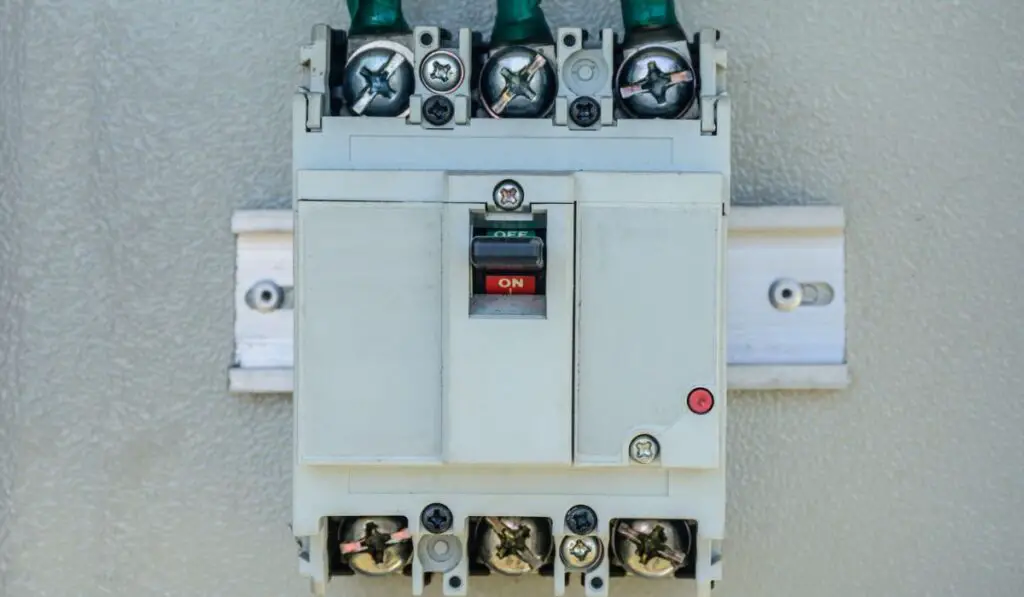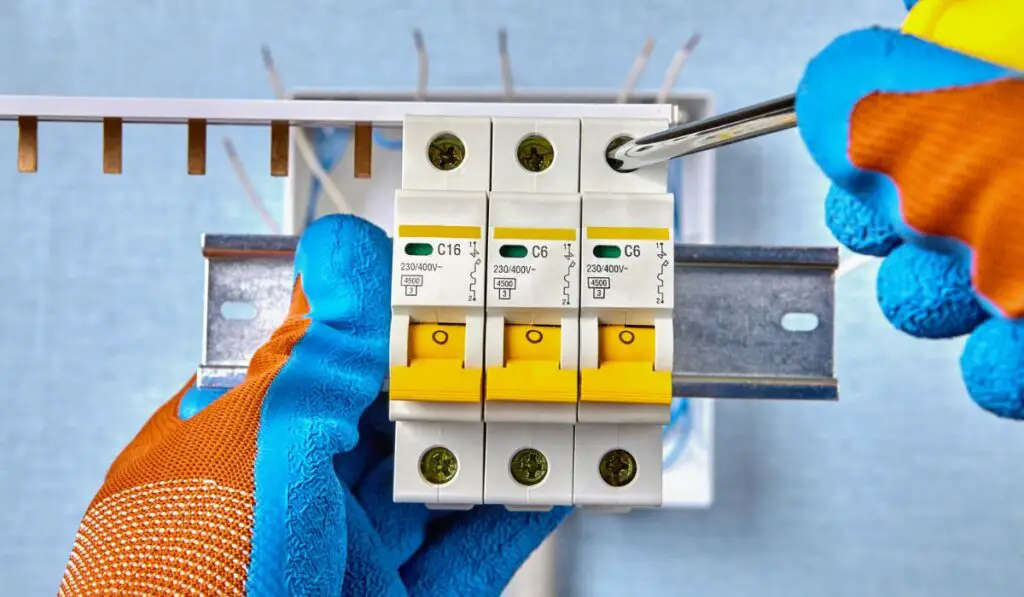Having a hot tub at your disposal whenever you need to de-stress is convenient and the perfect way to unwind and escape. Although we pay quite a lot of attention to hot tub features, such as the number of jets, seating configurations, and LED lighting options, it’s also crucial to choose the correct breaker for your hot tub to protect it from potential accidents.
A 50-60 AMP breaker is best for a hot tub. That said, it’s essential to consult the manufacturer’s recommendation before investing in a unit. A hot tub must have a GFCI wired by a licensed electrician. Make sure to choose a high-quality breaker to ensure your safety.
Hot tubs need electricity for most of their functions, and the correct breaker helps keep you safe in case of a circuit overload or short circuit. Let’s look at how a breaker operates and what you need to consider to find the correct breaker for your hot tub. We’ll also look at the different types of breakers to make sure you choose a unit according to the voltage of your hot tub.
How Does a Breaker Operate?

A breaker prevents your electrical fixtures and appliances from malfunctioning or getting burned from a power drip or surge. The breaker trips if it receives a lower or higher amount of current than it normally should.
Remember that you can’t wire a hot tub into an existing circuit breaker. Instead, you’ll need a separate breaker for it. In addition, breakers come in different ratings, so ensure you get the one that fits your hot tub requirements.
The National Electric Code has also made the installation of a GFCI or Ground Fault Circuit Interrupter necessary when installing a hot tub.
This interrupter breaks the electrical connection when there’s a power surge, or something goes wrong with the electrical grounding.
What Size Breaker Do You Need for a Hot Tub?
The breaker size suitable for your hot tub depends on your home’s electrical service. For example, a 20-AMP circuit breaker is ideal for a 110-volt service; for a 220-volt service, a 30 or 40-AMP circuit breaker is required.
As most modern hot tubs need 220-volt service, it’s doubtful you’ll be able to connect your hot tub to the existing circuit in your home. Instead, you’ll need to hire an electrician to connect the electrical panel to your hot tub.
Breaker amperage is determined by the amount of current safely interrupted by them in case of a short circuit or overload on the circuit they protect. Getting a properly-sized breaker for your hot tub is also essential, as it can draw a lot of current.
A wrong-sized breaker can be quite dangerous. Too small, and it may not trip in case of an overload and result in a fire. Too big, and it may trip unnecessarily, disrupt power to your home, or cause damage to your electrical system.
It’s also a good idea to consult an electrician to find the proper breaker size for your hot tub circuit.
What are the Different Types of Breakers?
The different types of breakers include:
- Standard: Simple breakers are of two types: single-pole and double-pole. Both these breakers prevent the current from short circuit and overloading. A single-pole breaker protects one wire (120V/15-20 AMPs), whereas a double-pole breaker protects two wires (120-240V/15-200 AMPs).
- Ground Fault Circuit Interrupter (GFCI): These breakers protect the whole circuit, including the wiring and devices, from deviations and fluctuations in your power supply. It protects against ground faults when electricity deviates from its intended path.
- This breaker is highly suitable for use in places with dampness and water, like kitchens, hot tubs, spas, outdoor spaces, bathrooms, etc.
- CAFCI: The Combination Arc Fault Circuit Interrupter protects against a parallel arc and a series arc, a change in the current on the same circuit.
- AFCI: The Arc Fault Circuit Interrupter detects an electric jump or abnormal path in the current between two different circuits. This breaker prevents a spark from turning into a fire, making it best for homes with old, fraying wiring.
Which Type of Breaker is Best for a Hot Tub?
There are two types of electrical connections used by hot tubs. Plug-and-play hot tubs run on 110V/15AMPs, while the hardwired hot tubs run on 220V/50AMPs.
Smaller hot tubs, also known as Plug and Play, usually have one pump and fewer jets. In addition, they come with a factory-installed cord protected by a 120-volt GFCI (ground fault circuit interrupter), allowing you to plug these units directly into a dedicated standard outlet.
Make sure there aren’t any other appliances, lights, etc., on this circuit at any time, and the circuit must have a 15 to 20 AMP breaker.
Most modern hot tubs are designed to work on 240-volt electrical service. Therefore, they need a 40 to 60 AMP breaker, which a licensed electrician must hardwire.
Hot tubs that run on a 220V/50 AMP GFCI-protected circuit operate most efficiently and perform optimally. This is because 220V units are designed with a larger heater which heats the water quickly, and all the features of the hot tub can be operated simultaneously.
All 220V hot tubs also need a 4-wire connection from the main circuit breaker panel. A GFCI disconnect breaker panel must also be almost 5 feet from the hot tub. Although most hot tubs run efficiently on a 50 AMP, 2-pole circuit breaker, some manufacturers may recommend a 60 AMP breaker.
Also, remember that a six gauge wiring is best for all 50/60 AMP installations.
What Else to Know Before Buying a Breaker

When buying a breaker, it’s essential to follow the recommendation of your hot tub manufacturer. You need a unit with the correct amperage to make the most of your hot tub. In addition, keep the following considerations in mind whether you are replacing an old breaker or adding a new one:
Price
Breakers come with different price tags, and you need to think carefully about how much you want to spend on a unit.
You may find breakers with the amperage you need at a low price, but they may not be high-quality. Low-quality products can fry out quickly and damage your home.
Be sure to invest in a unit made by a reputable company as they use high-quality materials, and their products are safe and designed to last a long time.
Type of Panel
It’s also important to have a little information about the type of panel you have if you’re adding a new breaker to your existing panel.
Each panel is unique, and knowing its brand and type will help you choose the breaker compatible with your panel. This will ensure a breaker that will fit and help you achieve excellent results.
